In today's competitive business landscape, building and maintaining strong customer relationships is paramount. A Customer Relationship Management (CRM) system serves as the linchpin in achieving this goal. CRM not only helps you streamline your interactions with customers but also allows you to tailor your marketing, sales, and customer service efforts to each individual's needs. In this comprehensive guide, we will delve into CRM best practices, helping you unlock the potential of this powerful tool to build lasting customer relationships.
I. Selecting the Right CRM System
Choosing the Right CRM Platform for Your Business
 Selecting the appropriate CRM system for your business is the first critical step towards building stronger customer relationships. It's essential to evaluate your unique business needs before making a choice.
Selecting the appropriate CRM system for your business is the first critical step towards building stronger customer relationships. It's essential to evaluate your unique business needs before making a choice.
Evaluating Your Business Needs: Before investing in a CRM system, assess the specific needs of your business. Consider your industry, company size, and operational model. A system that suits a large, established corporation might not be the best fit for a small startup.
On-Premise vs. Cloud-Based CRM Systems: One of the primary decisions you'll face is whether to opt for an on-premise or cloud-based CRM system. Each has its advantages. On-premise systems offer full control and customization, while cloud-based systems provide flexibility and accessibility from anywhere.
Features to Look for in a CRM System
When selecting a CRM system, pay attention to its features. A robust CRM should include:
Contact Management: Efficiently manage and organize customer data, including contact details, communication history, and preferences.
Sales and Marketing Automation: Automate repetitive tasks such as lead scoring, email marketing, and customer segmentation, increasing efficiency and consistency in your marketing and sales efforts.
Customization Options: A CRM system should be adaptable to your unique needs. Custom fields, workflow automation, and integration capabilities ensure the system aligns with your business processes.
Integrating CRM with Other Business Tools
CRM should seamlessly integrate with your existing tools to provide a holistic view of customer interactions.
The Importance of Integration: CRM integration ensures that data flows freely between your CRM and other essential business systems. This connectivity allows for a unified customer view and improved decision-making.
Popular CRM Integration Options: Most CRM systems offer integration with common tools like email marketing platforms, e-commerce solutions, and analytics software. Explore these integrations to create a well-rounded CRM ecosystem.
II. Data Management and Quality
Data Collection and Entry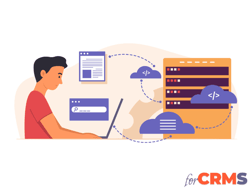
The foundation of any CRM system is accurate customer information. Effective data collection and entry processes are key.
Gathering Accurate Customer Information: Collect customer data consistently across touchpoints. This data should include contact information, purchase history, and customer preferences.
Streamlining Data Entry Processes: Automate data entry where possible to reduce errors and save time. Features like web forms and API integrations can help in this regard.
Data Cleansing and Maintenance
Over time, your customer data can become cluttered and outdated. Regular data audits and deduplication are essential to maintain data quality.
Regular Data Audits: Conduct regular audits to identify and rectify inaccuracies, inconsistencies, and outdated information in your CRM database.
Data Deduplication: Duplicate data can lead to confusion and wasted resources. Implement deduplication tools and practices to eliminate duplicate entries.
Data Security and Compliance
Protecting customer data and ensuring compliance with data regulations are paramount.
Protecting Customer Data: Implement robust security measures to safeguard sensitive customer information. This includes encryption, access controls, and secure backups.
Ensuring Compliance with Data Regulations: With the introduction of GDPR, CCPA, and other data protection regulations, it's crucial to ensure that your CRM practices adhere to these rules. Seek legal counsel or consult with a data protection expert to ensure compliance.
III. Customer Segmentation and Personalization
Segmenting Your Customer Base 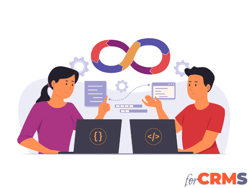
Customer segmentation is the art of dividing your customer base into distinct groups based on characteristics or behavior. Common segments include demographic and behavioral categories.
Demographic Segmentation: Segment customers based on demographic factors such as age, gender, location, and income. This information helps you tailor your marketing messages to different groups.
Behavioral Segmentation: Behavioral segmentation categorizes customers by their actions, such as purchase history, website interactions, and engagement with marketing campaigns.
Creating Personas
Building customer personas goes a step further. It involves creating detailed, fictional representations of your ideal customers.
Understanding Your Ideal Customer: Developing customer personas requires research and empathy. Dive into your data and conduct surveys or interviews to understand your customers' motivations, pain points, and preferences.
Tailoring Messaging to Personas: Personas help you create content and marketing messages that resonate with specific customer groups. This personalization drives engagement and conversions.
Personalization Strategies
With your segmented data and customer personas in hand, you can create highly personalized marketing strategies.
Personalized Email Campaigns: Leverage your CRM to send personalized email campaigns. Use segmentation and behavioral data to craft messages that speak directly to the recipient's interests and needs.
Dynamic Website Content: Implement dynamic content on your website that changes based on the visitor's characteristics or behavior. This keeps visitors engaged and increases the likelihood of conversion.
Personalized Product Recommendations: Use purchase history and browsing behavior to provide personalized product recommendations. This not only enhances the shopping experience but also drives sales.
IV. Lead Management and Nurturing
Lead Generation Strategies 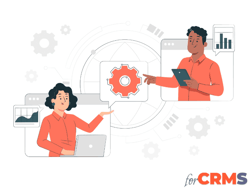
Effective lead generation strategies are the lifeblood of your CRM system.
Inbound vs. Outbound Lead Generation: Understand the differences between inbound and outbound lead generation. Inbound focuses on attracting customers to you through content and value, while outbound involves reaching out to potential leads directly.
Capturing and Qualifying Leads: Utilize lead capture forms on your website and other online channels to collect potential leads. Once collected, qualify leads based on their fit with your ideal customer profile.
Lead Nurturing Techniques
Once you've generated leads, it's crucial to nurture them through the sales funnel.
Drip Email Campaigns: Drip campaigns automate a series of targeted emails sent at specific intervals. These campaigns educate, engage, and guide leads toward a purchase decision.
Content Marketing for Lead Nurturing: Produce valuable content such as blog posts, ebooks, and webinars that address the pain points and questions of your leads. This content establishes your expertise and builds trust.
Social Media Engagement: Actively engage with leads on social media. Share relevant content, answer questions, and foster relationships. Social media is a powerful platform for building trust and rapport.
Sales Funnel Optimization
A well-optimized sales funnel guides leads through the buyer's journey.
Moving Leads Through the Sales Funnel: Identify where leads are in the sales funnel and tailor your communication accordingly. Early-stage leads need education, while those further along may require product demonstrations or free trials.
Lead Scoring and Prioritization: Implement lead scoring to rank leads based on their potential to convert. Prioritize your efforts on high-scoring leads to maximize resources.
V. Multichannel Engagement
The Importance of Multichannel Engagement 
Engaging with customers through various channels is essential for building stronger customer relationships.
Leveraging Email, Social Media, and More: Engaging with customers across multiple channels, including email, social media, chat, and even offline interactions, increases your brand's visibility and accessibility. It ensures that your customers can connect with you in the way they prefer.
Ensuring Consistency Across Channels: Consistency in branding and messaging across channels is vital. Customers should experience the same level of service and information whether they reach out through email, phone, or social media. This consistency builds trust and reinforces your brand identity.
Marketing Automation
Marketing automation is a key feature within CRM that can significantly enhance your customer engagement efforts.
Benefits of Marketing Automation: Marketing automation streamlines and automates repetitive marketing tasks, making your efforts more efficient and precise. It can be used for lead nurturing, customer onboarding, and ongoing communication.
Automating Customer Communication: Set up automated workflows for various customer interactions, from welcome emails for new subscribers to post-purchase follow-ups. This not only saves time but also ensures timely and relevant communication.
Social CRM
Building and maintaining relationships on social platforms is a valuable aspect of CRM.
Building Relationships on Social Platforms: Social CRM involves actively engaging with customers on platforms like Facebook, Twitter, and LinkedIn. Respond to comments, answer questions, and create meaningful dialogues to strengthen relationships.
Listening and Responding to Customer Feedback: Monitor social media for customer feedback and concerns. Address issues promptly and thank customers for positive feedback. Social media can be a powerful tool for demonstrating your commitment to customer satisfaction.
VI. Customer Support and Service
Providing Exceptional Customer Service 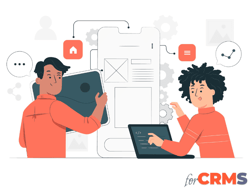
Outstanding customer service is a fundamental component of CRM.
Responsive Support Channels: Offer a variety of support channels, including live chat, email, phone, and self-service options, to ensure customers can get assistance when they need it.
24/7 Availability: In a global market, your customers may be in different time zones. Providing 24/7 support, at least through some channels, is a sign of dedication to your customers' needs.
Self-Service Options
Empower customers with self-service options to find answers to their questions and solutions to their problems.
Knowledge Bases and FAQs: Develop comprehensive knowledge bases and FAQs to address common customer queries. Make this information easily accessible on your website.
Interactive Troubleshooting Tools: Implement interactive troubleshooting tools or chatbots that guide customers through common issues, offering solutions and assistance.
Using CRM for Customer Service
Utilize your CRM system to streamline and improve your customer service processes.
Case Management: Manage customer service cases efficiently within your CRM system. Assign cases to the right agents, set priorities, and track resolution times.
Service Level Agreements (SLAs): Set service level agreements to define response times and issue resolution expectations. CRM can help automate SLA tracking and ensure that your team meets these commitments consistently.
VII. Analytics and Reporting
Tracking Key Performance Indicators (KPIs) 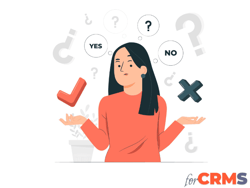
Use CRM to track key performance indicators (KPIs) related to sales, customer satisfaction, and more.
Sales Metrics: Monitor sales metrics like conversion rates, lead-to-customer ratios, and revenue growth. These metrics provide insights into your sales team's effectiveness.
Customer Satisfaction Metrics: Gather customer feedback and use metrics like Net Promoter Score (NPS) or Customer Satisfaction Score (CSAT) to measure customer satisfaction. These metrics help you understand how well you're meeting your customers' needs.
Data Visualization Tools
Data visualization tools create informative dashboards for better decision-making.
Creating Informative Dashboards: Dashboards provide a visual representation of your CRM data. They allow you to track KPIs, monitor trends, and identify areas that require attention.
Data-Driven Decision-Making: Use data to make informed decisions about your marketing, sales, and customer service strategies. Data-driven decisions are more likely to lead to positive outcomes.
Continuous Improvement
Finally, use CRM analytics to continuously improve your strategies.
Analyzing Customer Behavior: Analyze customer behavior to understand how they interact with your brand. Identify patterns and preferences to improve your product or service offerings.
Making Informed Adjustments: Take action based on your CRM data. If a particular segment of customers is not responding well to your marketing efforts, adjust your strategy. Continuous improvement ensures that your CRM system evolves to meet changing customer needs.
Conclusion
In the ever-evolving world of business, building stronger customer relationships is not an option; it's a necessity. A well-implemented CRM system can be the game-changer that your company needs. By selecting the right CRM platform, managing data effectively, segmenting your customer base, nurturing leads, engaging through multiple channels, providing exceptional customer service, and utilizing analytics, you can unlock the full potential of CRM. The result? Stronger customer relationships that lead to increased loyalty and business success. Embrace CRM best practices, and watch your customer relationships thrive. In the end, CRM is not just a system; it's a philosophy of putting your customers at the center of your business.



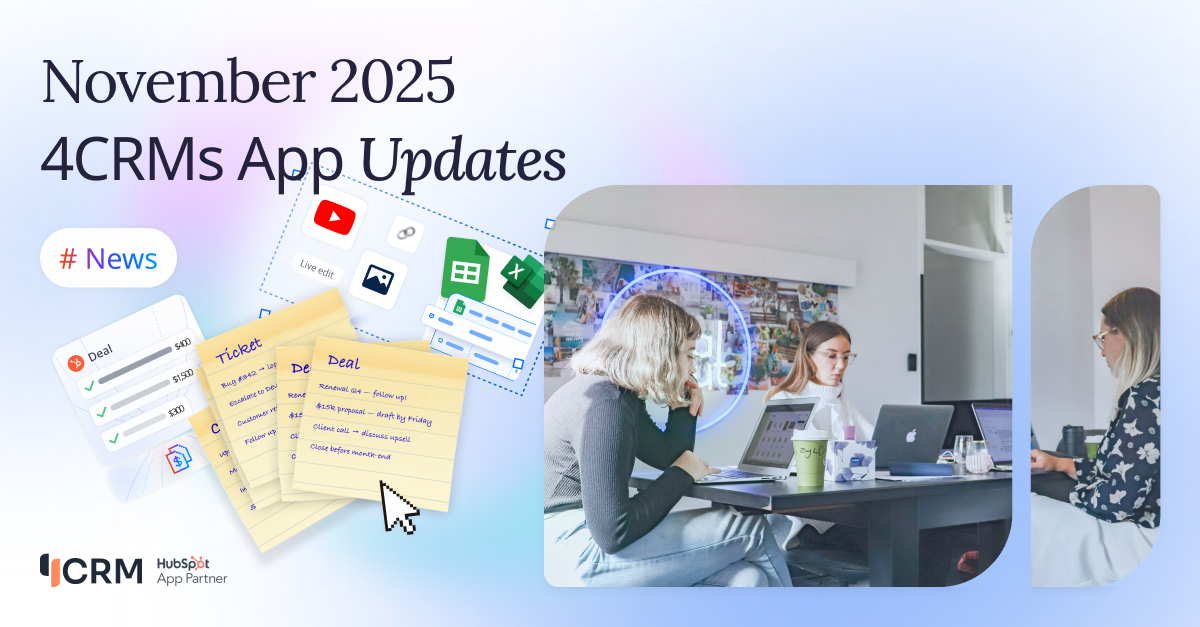


.png)
.png)